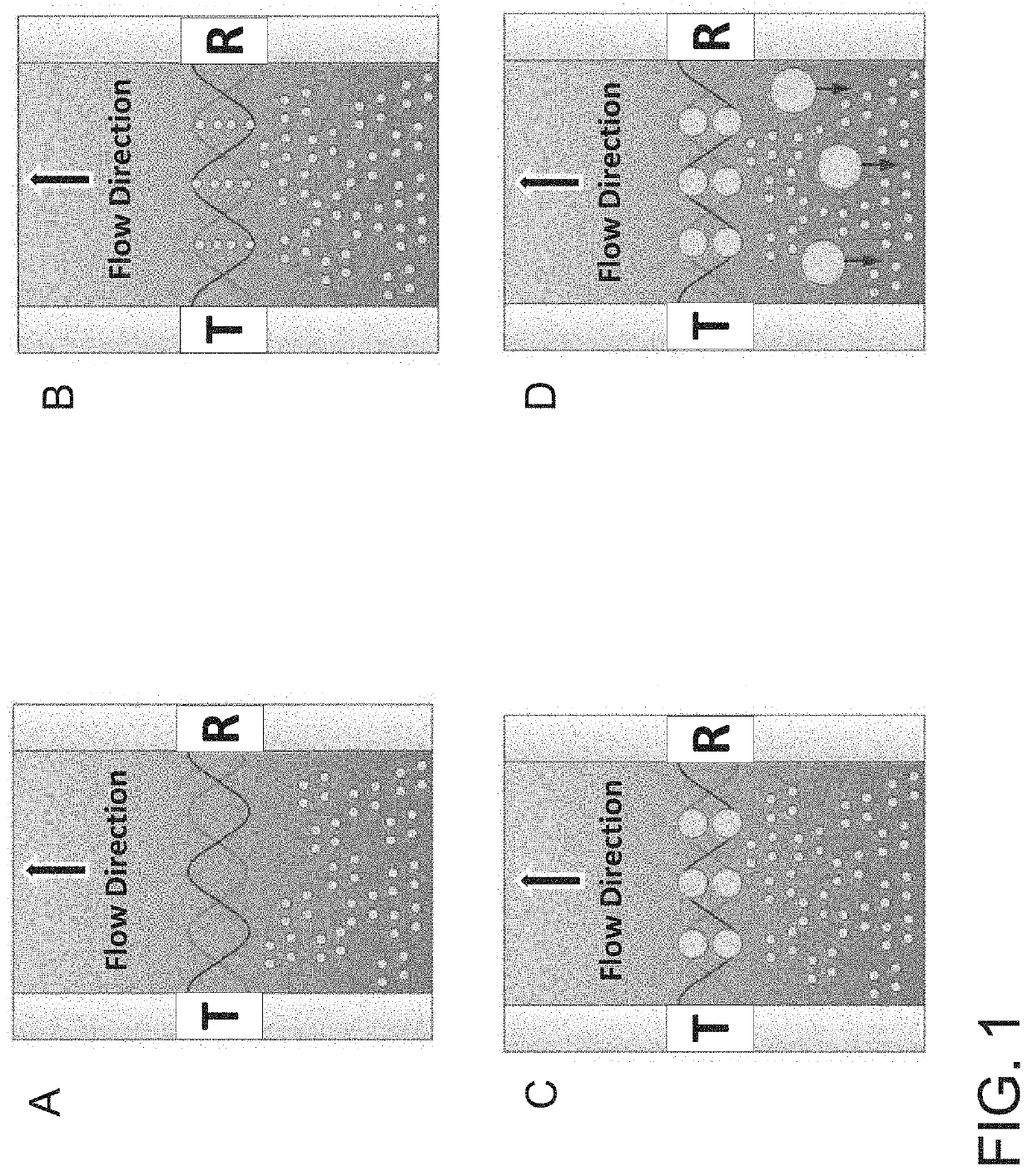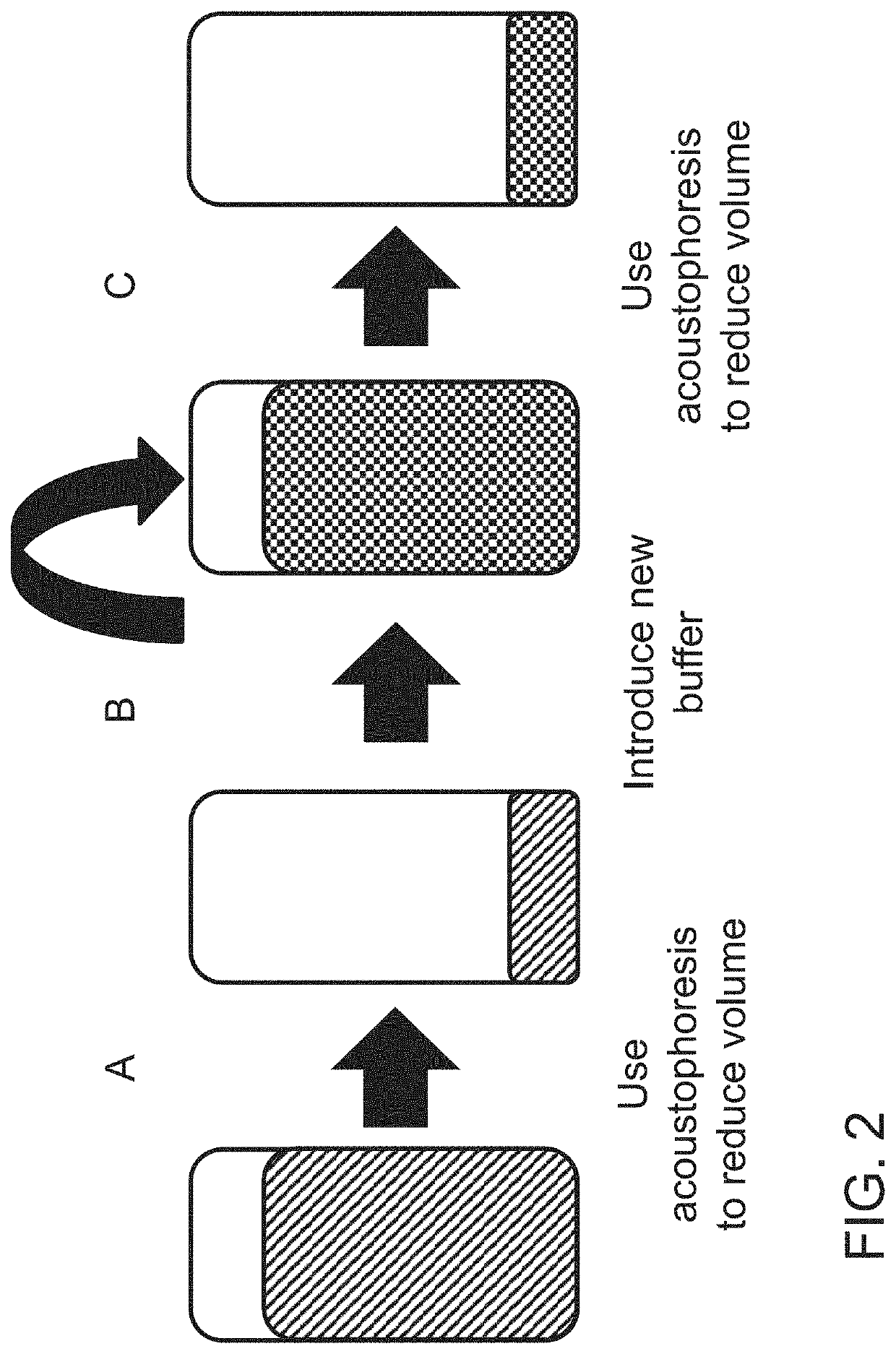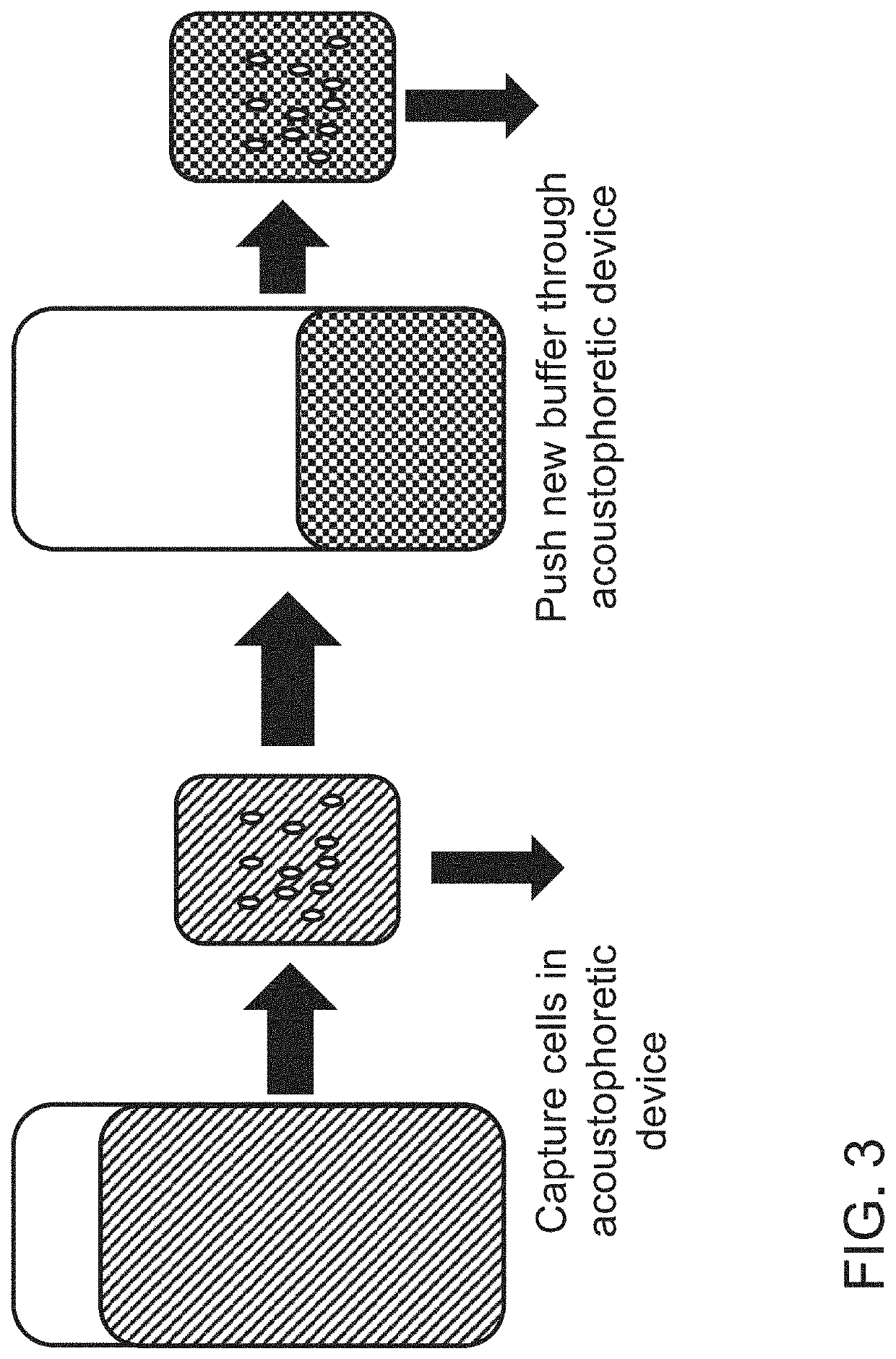Therapeutic cell washing, concentration, and separation utilizing acoustophoresis
a technology of acoustophoresis and cell washing, applied in the direction of enzymology, specific use bioreactor/fermenter, biomass after-treatment, etc., to achieve the effect of reducing cost, improving efficiency and improving process efficiency
- Summary
- Abstract
- Description
- Claims
- Application Information
AI Technical Summary
Benefits of technology
Problems solved by technology
Method used
Image
Examples
examples
[0114]The ability of an acoustophoretic system of the present disclosure to concentrate Jurkat T-cells was tested. Jurkat T-cells have a diameter of 11 micrometers (μm) to 14 μm. An acoustophoretic device was used, and a Beckman Coulter Vi-CELL X was used at various test conditions to measure the cell density reduction.
[0115]In the first trial A, the T-cells were concentrated, and the cell density of the permeate was measured. The dotted line indicates the feed cell density. Desirably, the cell density in the permeate is as low as possible, indicating that the cells are retained in the concentrate. The graph in FIG. 29 shows the results of trial A over time. The results show very low cell densities in the permeate, between 0.0 and 0.2 million cells / mL, showing that most of the cells are in the concentrate. The results also show a high permeate reduction percentage, between 80% and 99%.
[0116]In the second trial B, the T-cells were concentrated, and the cell density of the permeate wa...
PUM
| Property | Measurement | Unit |
|---|---|---|
| flow rate | aaaaa | aaaaa |
| concentrated volume | aaaaa | aaaaa |
| phase angle | aaaaa | aaaaa |
Abstract
Description
Claims
Application Information
 Login to View More
Login to View More - R&D
- Intellectual Property
- Life Sciences
- Materials
- Tech Scout
- Unparalleled Data Quality
- Higher Quality Content
- 60% Fewer Hallucinations
Browse by: Latest US Patents, China's latest patents, Technical Efficacy Thesaurus, Application Domain, Technology Topic, Popular Technical Reports.
© 2025 PatSnap. All rights reserved.Legal|Privacy policy|Modern Slavery Act Transparency Statement|Sitemap|About US| Contact US: help@patsnap.com



